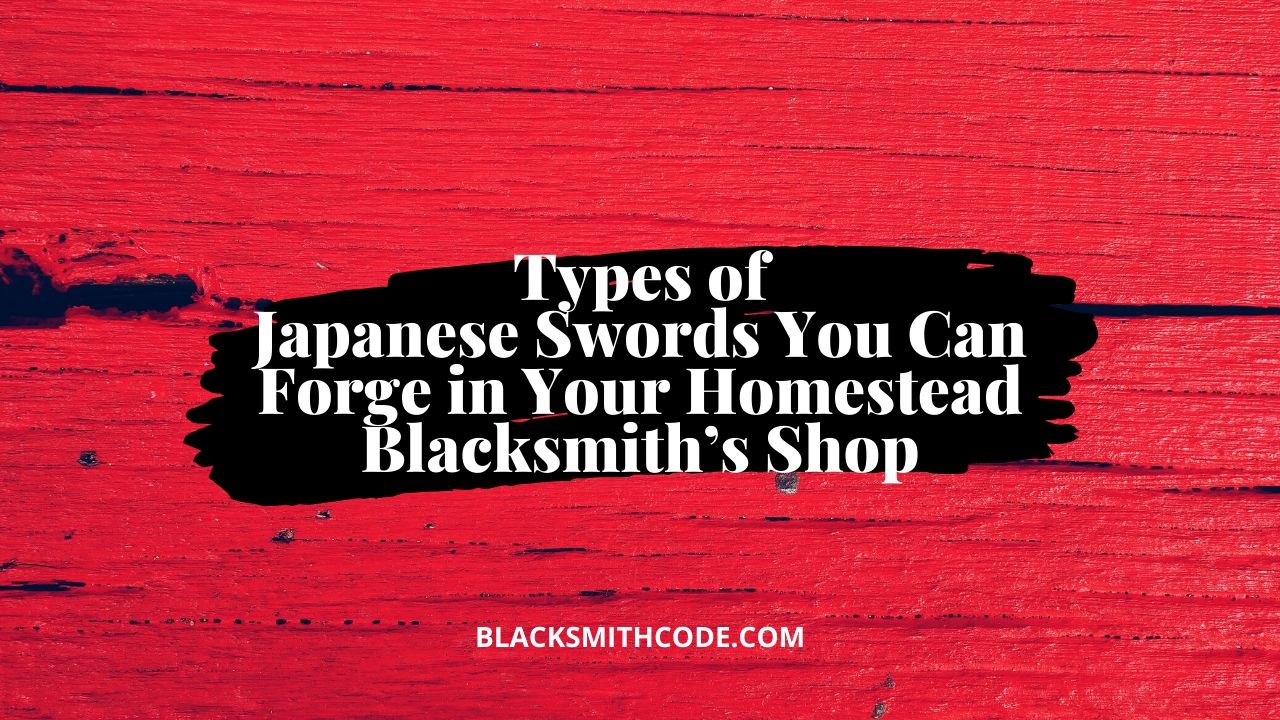The art of Samurai swordsmanship was complemented with impeccably crafted swords. The swords were famous for their strength and fine craftsmanship. Some of the most important Samurai swords include katana, tanto, odachi, wakizashi, chokutu, uchigatana and kodachi among others. The designs of the swords have gone through some changes over the years. Find out the common types of japanese swords.
Not all of these are fashioned by modern blacksmiths. The katana is the most commonly forged Japanese sword in many blacksmith’s workshop. Here is a look at some of the top Japanese swords that you can forge in your homestead workshop.
Katana
‘Katana’ is general term that is useful for describing most traditional types Japanese swords that has a curved blade which is longer than 60cm. While there is no upper limit of the length, the katana swords tend to be no longer than 80cm. The katana sword is worn in a sash with its edge facing upwards. They evolved out of the uchigatana swords and were the swords of choice for the samurai class during the Edo period in Japan. The Edo period lasted from the 1600s to the 19th century.
Chokuto
The chokuto is a straight sword. It has a straight and single-edge and was commonplace in the 10th century. Given that it’s a millennium old, the earliest chokuto swords were forged without folding or any differential hardening.
Kodachi
In Japanese, kodachi translates into “small big sword” and it is one of the most common types of japanese swords. These swords were mostly predominant in 13th century Japan. It is a shorter version of the tachi sword but it has the same mounts as well as targeted use-case as the tachi.
Tachi
Tachi translates into “big sword”. The tachi is longer and has more curve than the katana swords that came about much later. The curvature of the tachi sword has its center from the center of the sword towards the sword’s tang and sometimes, including the tang. The tachi swords were worn while suspended with the edge of the sword facing downwards. This type of Japanese sword popular in Japan before the 15th century.
Odachi
In Japanese, odachi means “big big sword”. They tend to be very long. Some can be as long as 100cm or more. The odachi blade was predominate in the late 14th century Japan.
Wakizashi
The name translates to a “companion sword”. The wakizahis are typically 30cm to 60cm long. The Wakizashi blades are typically short and they accompanied the katana swords. They were useful predominantly in the 1600s. They were also worn by other social classes other than the samurais as a single blade. Sometimes, they wear the wakizashi edge up like a katana sword, making it one of the most handy types of japanese swords.
Tanto
Tanto means “short blade”, and it is more of a dagger. Traditionally, the tanto can have single-edge or double-edge with the length ranging from 15cm to 30cm. Generally, however, the sword has one-edge. The double-edged swords are usually asymmetrical.
Uchigatana
The uchigatana dates back to the 15th century and was worn with its edge facing upwards.

